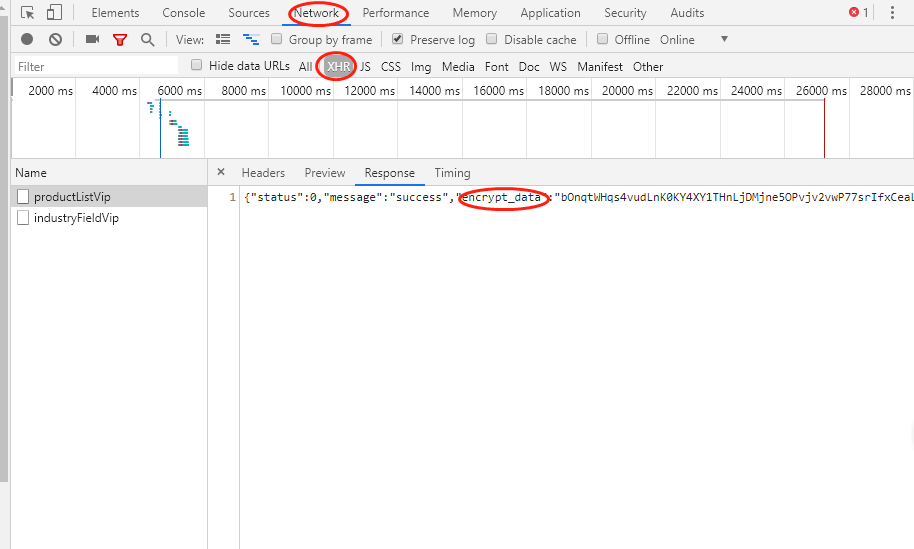Python爬虫实现抓取京东店铺信息及下载图片功能示例
本文实例讲述了Python爬虫实现抓取京东店铺信息及下载图片功能。分享给大家供大家参考,具体如下:
这个是抓取信息的
from bs4 import BeautifulSoup
import requests
url = 'https://list.tmall.com/search_product.htm?q=%CB%AE%BA%F8+%C9%D5%CB%AE&type=p&vmarket=&spm=875.7931836%2FA.a2227oh.d100&from=mallfp..pc_1_searchbutton'
response = requests.get(url) #解析网页
soup = BeautifulSoup(response.text,'lxml') #.text将解析到的网页可读
storenames = soup.select('#J_ItemList > div > div > p.productTitle > a') #选择出商店的信息
prices = soup.select('#J_ItemList > div > div > p.productPrice > em') #选择出价格的信息
sales = soup.select('#J_ItemList > div > div > p.productStatus > span > em') #选择出销售额的信息
for storename, price, sale in zip(storenames,prices,sales):
storename = storename.get_text().strip() #用get_text()方法筛选出标签中的文本信息,由于筛选结果有换行符\n所以用strip()将换行符去掉
price = price.get_text()
sale = sale.get_text()
print('商店名:%-40s价格:%-40s销售额:%s'%(storename,price,sale)) #使打印出来的信息规范
print('----------------------------------------------------------------------------------------------')
这个是下载图片的
from bs4 import BeautifulSoup
import requests
import urllib.request
url = 'https://list.tmall.com/search_product.htm?q=%CB%AE%BA%F8+%C9%D5%CB%AE&type=p&vmarket=&spm=875.7931836%2FA.a2227oh.d100&from=mallfp..pc_1_searchbutton'
response = requests.get(url)
soup = BeautifulSoup(response.text, 'lxml')
imgs = soup.select('#J_ItemList > div > div > div.productImg-wrap > a > img')
a = 1
for i in imgs:
if(i.get('src')==None):
break
img = 'http:'+i.get('src') #这里废了好长的时间,原来网站必须要有http:的
#print(img)
urllib.request.urlretrieve(img,'%s.jpg'%a, None,)
a = a+1
ps:
1.选择信息的时候用css
2.用get_text()方法筛选出标签中的文本信息
3.strip,lstrip,rstrip的用法:
Python中的strip用于去除字符串的首尾字符;同理,lstrip用于去除左边的字符;rstrip用于去除右边的字符。
这三个函数都可传入一个参数,指定要去除的首尾字符。
需要注意的是,传入的是一个字符数组,编译器去除两端所有相应的字符,直到没有匹配的字符,比如:
theString = 'saaaay yes no yaaaass'
print theString.strip('say')
theString依次被去除首尾在['s','a','y']数组内的字符,直到字符在不数组内。所以,输出的结果为:
yes no
比较简单吧,lstrip和rstrip原理是一样的。
注意:当没有传入参数时,是默认去除首尾空格和换行符的。
theString = 'saaaay yes no yaaaass'
print theString.strip('say')
print theString.strip('say ') #say后面有空格
print theString.lstrip('say')
print theString.rstrip('say')
运行结果:
yes no
es no
yes no yaaaass
saaaay yes no
更多关于Python相关内容可查看本站专题:《Python Socket编程技巧总结》、《Python正则表达式用法总结》、《Python数据结构与算法教程》、《Python函数使用技巧总结》、《Python字符串操作技巧汇总》、《Python入门与进阶经典教程》及《Python文件与目录操作技巧汇总》
希望本文所述对大家Python程序设计有所帮助。
